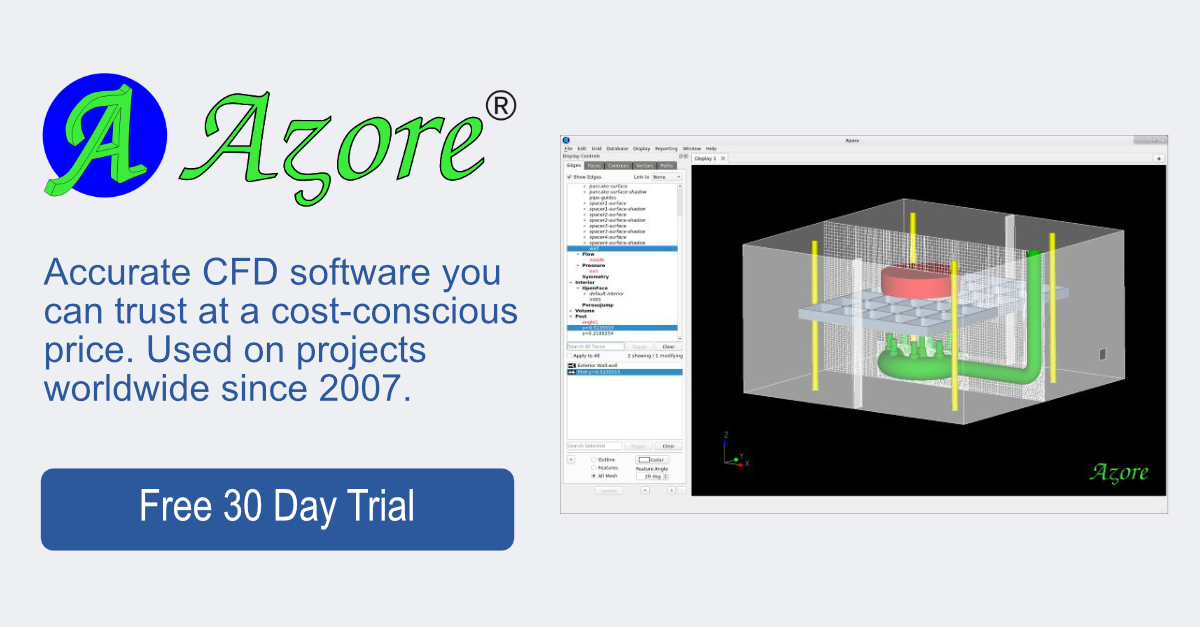Transient Case Study: Gas Filling a Confined Space
by Kelly Hile
To showcase Azore’s new transient feature, our CFD engineers performed an unsteady-state simulation based on a well-documented experimental test case. The results highlight Azore’s ability to predict transient flow, gas dispersion, and buoyancy-driven flow.
In the documented experiment, a test fixture (pictured below) is gradually filled with hydrogen gas at a set flow rate through a nozzle on the bottom left.
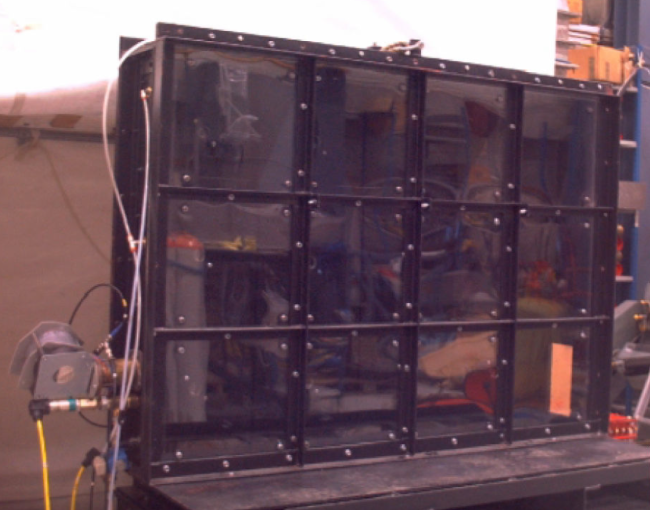
The fixture contains a single vent on the lower right side, along with four baffles that restrict flow throughout the space. The experimental data was obtained through the coordinate placement of 12 sensors, which measured the concentration of hydrogen as it changed with time.
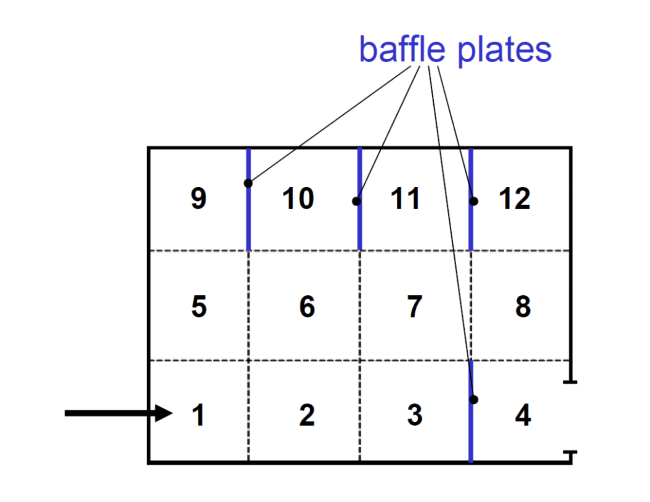
The placement of the first baffle (between zones 9 and 10) is a sensitive location, such that it will split the flow of the incoming hydrogen jet, which immediately moves upward. Azore predicts the concentration of hydrogen at this point (in zone 10) in strong agreement with the concentration readings from sensor 10. The authors of the original study conclude that this indicates good buoyant jet modeling by the solver.1
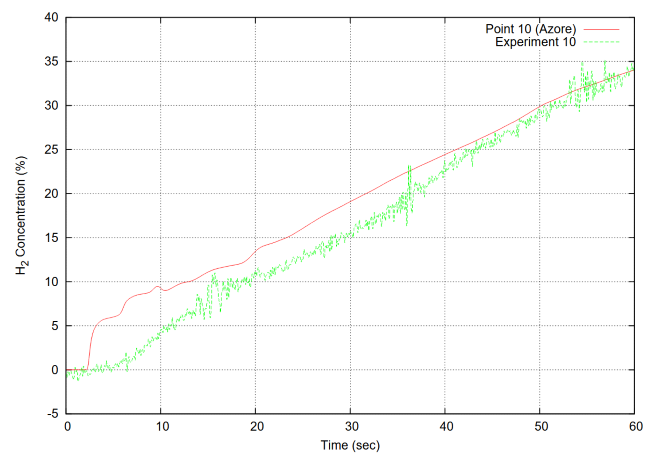
For the remaining sensors, Azore’s results compare reasonably well with the data, similar to the other solver codes used in the study.
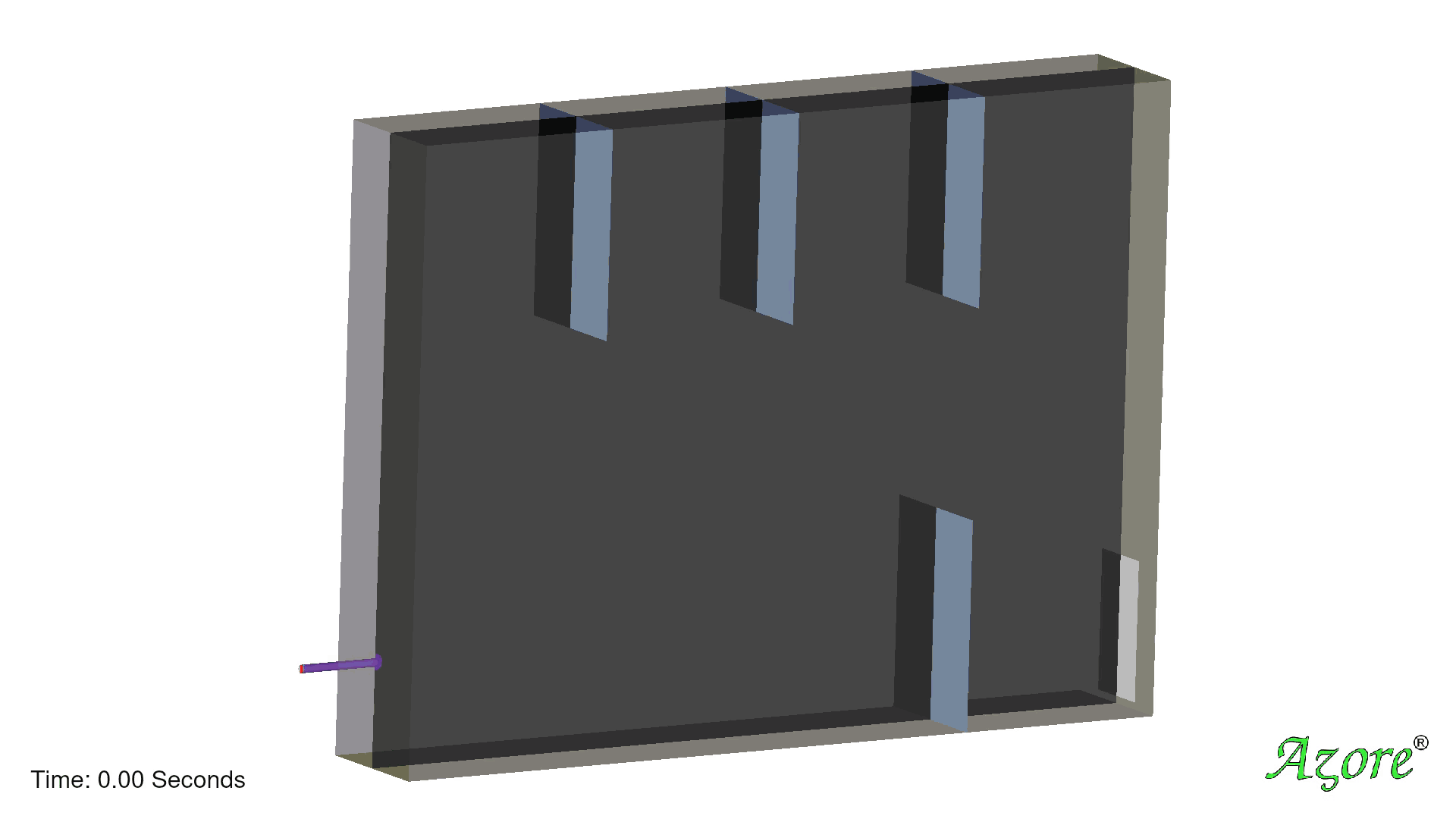
Accuracy is not the only thing Azore has to offer with transient flow simulations. Azore also has built-in tools to make transient simulations easier to manage. Stay tuned for our next blog article, where we’ll be sharing about Azore’s toolbox for data management and post-processing of transient solutions.
- Jordan, Thomas & Garcia, Javier & Hansen, Olav & Huser, Asmund & Ledin, Stefan & Middha, Prankul & Molkov, Vladimir & Travis, J. & Venetsanos, Alexandros & Verbecke, F & Xiao, Jianjun. (2007). Results of the HySafe CFD Validation Benchmark SBEPV5.

